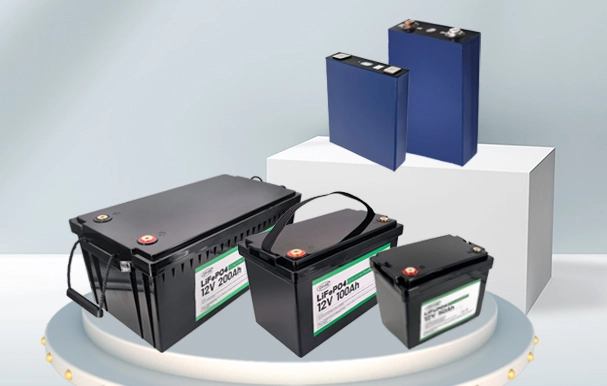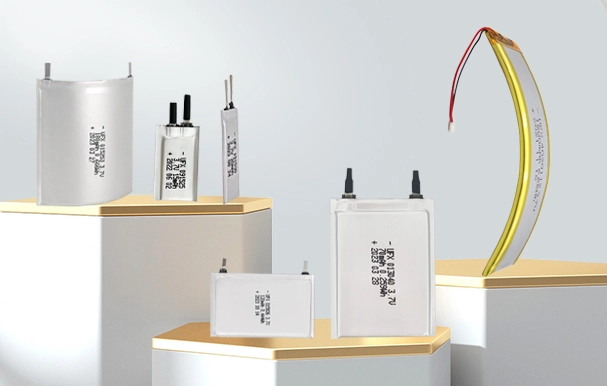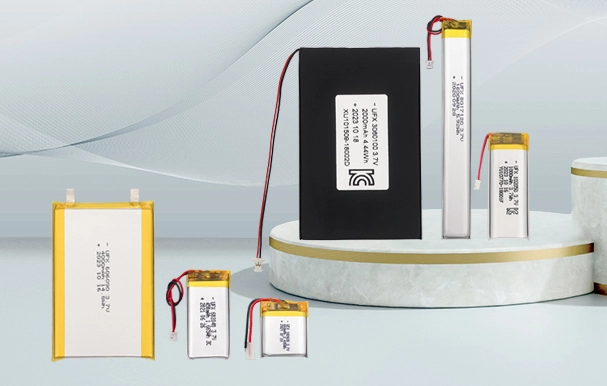Lithium ion batteries are everywhere these days. They power everything from our smartphones and laptops to electric cars and even power tools. But did you know that these batteries come in various sizes and shapes to fit different needs? Yep, it’s true! Understanding the different lithium ion battery sizes can help you pick the right one for your device, ensuring it runs smoothly and efficiently. So, let’s dive in and explore everything you need to know about lithium ion battery sizes.
Part 1. Types of lithium batteries
First things first, let’s talk about the different types of lithium ion batteries. Each type has unique characteristics and is designed for specific applications. Here are the main types:
- Cylindrical Batteries
- Square Batteries (Prismatic Batteries)
- Button Batteries
- Special-Shaped Batteries
- Pouch Batteries
Each of these types comes with its own set of advantages and is used in different kinds of devices. Now, let’s take a closer look at each type.
Part 2. Cylindrical lithium batteries
Cylindrical lithium batteries are probably the most recognizable. They look a lot like AA batteries but come in various sizes and capacities. These batteries are known for their durability and high energy density, making them perfect for high-drain devices.
Common Cylindrical Battery Sizes:
- 18650: This is the most common size, measuring 18mm in diameter and 65mm in length. It’s widely used in laptops, flashlights, and even electric vehicles.
- 21700: Slightly larger than the 18650, this battery measures 21mm in diameter and 70mm in length. It offers higher capacity and is becoming popular in electric vehicles and power tools.
- 26650: This battery is bigger, measuring 26mm in diameter and 65mm in length. It’s used in applications that need more power, like electric bikes and high-performance flashlights.
Applications:
- Laptops: Cylindrical batteries like the 18650 are commonly used in laptop battery packs.
- Flashlights: High-powered flashlights often use these batteries for their long runtime.
- Electric Vehicles: Many electric vehicles use cylindrical batteries in their battery packs due to their efficiency and energy density.
Part 3. Prismatic lithium batteries
Square lithium batteries, also known as prismatic batteries, are another popular type. These batteries are often found in mobile phones and tablets. They have a rectangular shape, which makes them easier to pack tightly in devices.
Common Square Battery Sizes:
- 103450: This battery measures 10mm in thickness, 34mm in width, and 50mm in height.
- 803860: This one measures 8mm in thickness, 38mm in width, and 60mm in height.
- 7043120: Larger in size, it measures 7mm in thickness, 43mm in width, and 120mm in height.
Applications:
- Mobile Phones: Prismatic batteries are commonly used in smartphones due to their compact size.
- Tablets: These batteries are also found in tablets, offering a good balance of size and capacity.
- Portable Electronics: Various portable devices use prismatic batteries for their efficient space utilization.
Part 4. Button lithium batteries
Button lithium batteries are small, coin-shaped batteries. They’re often found in small electronics and wearable devices. Despite their small size, they pack a punch and can last a long time.
Common Button Battery Sizes:
- CR2032: This is the most common size, measuring 20mm in diameter and 3.2mm in thickness. It’s used in watches, calculators, and some medical devices.
- CR2025: Slightly thinner than the CR2032, this battery measures 20mm in diameter and 2.5mm in thickness.
- CR2016: Even thinner, this one measures 20mm in diameter and 1.6mm in thickness.
Applications:
- Watches: Button batteries are commonly used in wristwatches.
- Hearing Aids: These batteries are ideal for hearing aids due to their compact size.
- Small Electronics: Devices like calculators and small remote controls often use button batteries.
Part 5. Special-shaped lithium batteries
Special-shaped lithium batteries are designed for unique applications where standard shapes just won’t fit. These batteries come in various shapes and sizes tailored to specific devices.
Common Applications:
- Wearable Devices: Smartwatches and fitness trackers often use custom-shaped batteries to fit their slim profiles.
- Medical Devices: Medical implants and portable medical equipment use specialized batteries.
- Drones: Drones and other RC devices often need specially shaped batteries to optimize weight distribution and performance.
These batteries are custom-made to meet the specific needs of the device they power, ensuring optimal performance and longevity.
Part 6. Pouch lithium batteries
Pouch lithium batteries, also known as LiPo batteries, are flexible and lightweight. They come in a soft, flat pouch, making them ideal for thin and light devices. These batteries are becoming increasingly popular due to their versatility and high energy density.
Common Pouch Battery Sizes:
- 403450: This battery measures 4mm in thickness, 34mm in width, and 50mm in height.
- 606090: This one measures 6mm in thickness, 60mm in width, and 90mm in height.
- 9095100: Larger in size, it measures 9mm in thickness, 95mm in width, and 100mm in height.
Applications:
- Smartphones: Pouch batteries are commonly used in smartphones for their slim design.
- Tablets: These batteries are also found in tablets, providing a high energy density in a compact form.
- Electric Vehicles: Pouch batteries are used in some electric vehicles due to their flexibility and efficiency.
Part 7. Is there a standard size for lithium ion batteries?
So, is there a standard size for lithium ion batteries? The short answer is no. Lithium ion batteries come in various sizes and shapes, depending on the application. Manufacturers design batteries to fit the specific requirements of the device they will power. This means there is no one-size-fits-all when it comes to lithium ion batteries.
Part 8. Table of lithium Ion battery sizes
To make things a bit easier, here’s a handy table comparing the different sizes of lithium ion batteries we’ve discussed:
| Battery Type | Common Sizes | Dimensions (mm) | Applications |
|---|---|---|---|
| Cylindrical | 18650, 21700, 26650 | 18×65, 21×70, 26×65 | Laptops, flashlights, EVs |
| Square (Prismatic) | 103450, 803860, 7043120 | 10x34x50, 8x38x60, 7x43x120 | Mobile phones, tablets |
| Button | CR2032, CR2025, CR2016 | 20×3.2, 20×2.5, 20×1.6 | Watches, hearing aids, small electronics |
| Special-Shaped | Custom | Various | Wearables, medical devices, drones |
| Pouch | 403450, 606090, 9095100 | 4x34x50, 6x60x90, 9x95x100 | Smartphones, tablets, EVs |
Part 9. Choosing the right lithium ion battery size
Now that you know all about the different types and sizes of lithium ion batteries, how do you choose the right one for your device? Here are some tips to help you make the best choice:
- Determine Your Device’s Requirements: Start by checking your device’s specifications. Look for information on voltage, capacity, and size requirements. This will help you narrow down your options.
- Consider Physical Space: Measure the available space in your device’s battery compartment. Make sure the battery you choose will fit comfortably without any tight squeezes.
- Evaluate Your Runtime Needs: Think about how long you need your device to run on a single charge. If you need extended use, opt for a battery with a higher capacity. For example, if you’re using a flashlight for long camping trips, a larger battery like the 26650 might be a better choice.
- Check Rechargeability: If you plan to use the battery for a long time, make sure it’s rechargeable. Rechargeable batteries are more cost-effective and environmentally friendly in the long run.
- Safety First: Always choose batteries from reputable manufacturers. Cheap, low-quality batteries can pose safety risks, including overheating and even explosions. Stick to well-known brands to ensure safety and reliability.
- Read Reviews: Before making a purchase, read reviews from other users. This can give you insights into the battery’s performance and reliability.
By considering these factors, you can choose the right lithium ion battery size for your device, ensuring it runs efficiently and safely.
Lithium ion batteries come in many shapes and sizes, each designed to meet the specific needs of different devices. From cylindrical batteries used in laptops and electric vehicles to prismatic batteries in smartphones and tablets, there’s a lithium ion battery for every application. By understanding the different types and sizes, you can make informed decisions and choose the best battery for your needs. So, next time you’re shopping for a battery, you’ll know exactly what to look for.
Related Tags:
More Articles

How to Choose the Best Floor Scrubber Battery for Commercial Cleaning?
Selecting the ideal floor scrubber battery ensures a long runtime, rapid charging, and minimal maintenance for efficient commercial cleaning operations.
Battery for Blower vs Battery for Leaf Vacuum: Which One Should You Choose?
Battery for blower vs leaf vacuum—learn the key differences in power, fit, and runtime to choose the right battery for your outdoor tool needs.
How to Choose the Right Battery for Blower?
Choosing the right blower battery? Consider voltage, capacity, chemistry & usage. This guide helps match the best battery for peak performance.
How to Choose the Best Insulated Battery Box for Lithium Batteries?
Choosing the Best Insulated Battery Box for Lithium Batteries? Discover key factors such as size, material, and safety for optimal protection and performance.
7 Critical Elements on a Lithium Battery Shipping Label
What must be on a lithium battery shipping label? Learn 7 key elements to ensure safety, legal compliance, and correct handling across all transport modes.







